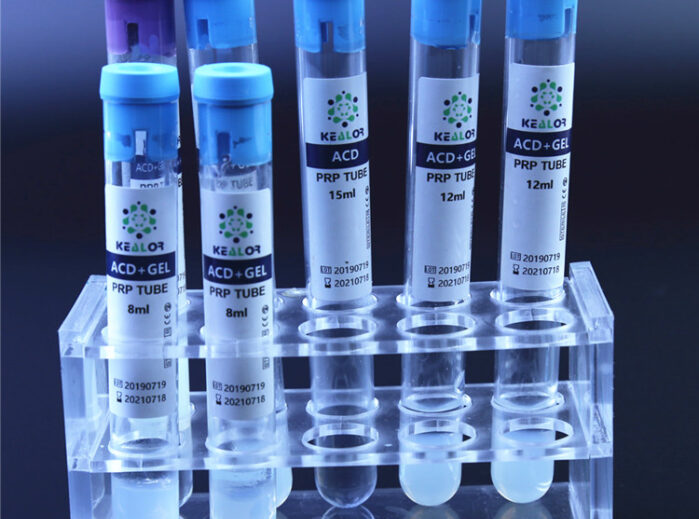Platelet Rich Plasma (PRP) kits typically consist of several key components that are essential for the collection and preparation of PRP. However, it’s important to note that the specific components and their design can vary from one manufacturer to another. Here are the key components commonly found in PRP kits and how they may differ:
- Collection Tubes: PRP kits include specialized tubes or containers for blood collection. These tubes are often designed to prevent contamination and are anticoagulant-coated to prevent blood clotting during the initial blood draw. Manufacturers may use different types of tubes with varying volumes and coatings.
- Centrifuge: A centrifuge is a critical component of a PRP kit. It is used to separate the different components of blood, including plasma, platelets, and red blood cells. The design, speed, and settings of the centrifuge can vary, affecting the quality and concentration of PRP produced.
- Gel Separator: Some PRP kits include a gel separator that helps in isolating the PRP from the rest of the blood components during the centrifugation process. Different kits may use different types of gel separators.
- Needles and Syringes: PRP kits often include needles and syringes for blood collection and PRP injection. These may vary in size and quality.
- Activation Agents: Some PRP kits include activators or additives that help initiate the release of growth factors from platelets. These substances may differ between manufacturers, and their use can affect the PRP’s effectiveness.
- Instructions: Manufacturers provide instructions for using their PRP kits. These instructions can vary in clarity and detail, impacting the user’s ability to prepare PRP correctly.
- Accessories: PRP kits may come with various accessories such as tourniquets, alcohol swabs, or bandages for the blood collection and injection processes.
- Quality Control: Different manufacturers may have varying quality control measures in place to ensure the consistency and safety of their PRP kits. This can include batch testing, sterility checks, and adherence to regulatory standards.
- Packaging: The packaging of PRP kits can differ in terms of materials used, sterility maintenance, and ease of storage and transport.
- Price: Cost can vary significantly between different PRP kits, and this can be influenced by factors such as the quality of components, branding, and manufacturer reputation.
- Regulatory Compliance: Manufacturers may have varying levels of adherence to regulatory standards and certifications, which can impact the safety and reliability of their PRP kits.
It’s essential for healthcare providers to carefully evaluate and choose PRP kits based on their specific needs, the intended applications, and the manufacturer’s reputation. Understanding the differences in kit components and their potential impact on PRP quality is crucial for successful PRP therapy. Additionally, consulting with experts in the field and following best practices for PRP preparation and administration is highly recommended.








